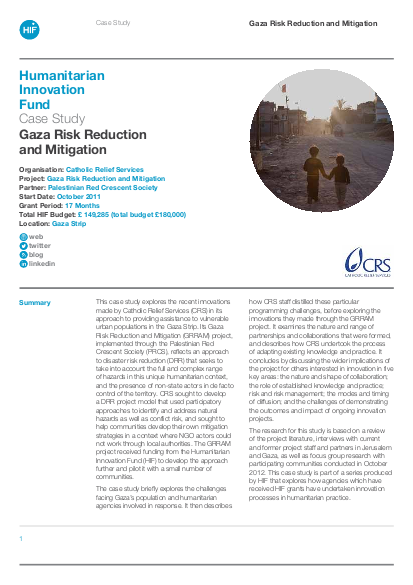
This case study explores the recent innovations made by Catholic Relief Services (CRS) in its approach to providing assistance to vulnerable urban populations in the Gaza Strip. Its Gaza Risk Reduction and Mitigation (GRRAM) project, implemented through the Palestinian Red Crescent Society (PRCS), reflects an approach to disaster risk reduction (DRR) that seeks to take into account the full and complex range of hazards in this unique humanitarian context, and the presence of non-state actors in de facto control of the territory. CRS sought to develop a DRR project model that used participatory approaches to identify and address natural hazards as well as conflict risk, and sought to help communities develop their own mitigation strategies in a context where NGO actors could not work through local authorities. The GRRAM project received funding from the Humanitarian Innovation Fund (HIF) to develop the approach further and pilot it with a small number of communities.
Resource collections
- Gaza humanitarian response
- Innovation
- UN Habitat - Urban Response Collection
- Urban Response - Urban Crisis Preparedness and Risk Reduction
- Urban Response Collection - Community Engagement and Social Cohesion
- Urban Response Collection - Economic Recovery
- Urban Response Collection - Environment and Climate Change
- Urban Response Collection - Housing, Land and Property
- Urban Response Collection - Urban Crisis Response, Recovery and Reconstruction
- Urban Response Collection - Urban Resilience